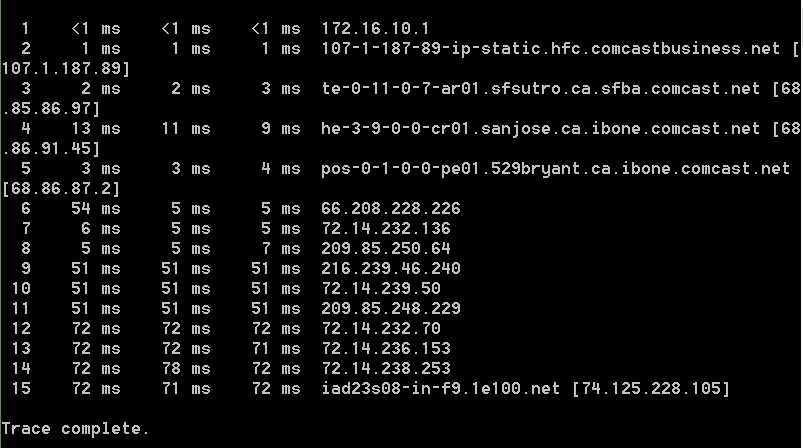The maximum bandwidth used against a site is bad enough, but there is also a reported 700% increase in the average attack. In Q4 2012 the average bandwidth was around 6Gbps and now in Q1 2013 it is up to around 49Gbps. This increase is very alarming, but it is just the beginning. As we mentioned DDoS attacks have changed in the way they are used. In the past a DDoS attack might be used to harass or bring down a website. Now they are also being used to target ISPs and other internet infrastructure services.
This means that an attacker can target a router or switch (or multiple ones) and prevent them from responding to or processing traffic. It is easy to find these bits of hardware as a simple trace route and identify a number of them as your traffic heads to its destination. As you can see in the picture below there are a number of devices that are identified by name and IP address so it is easy to find targets for attacks.
It is this last type of attack that is concerning when it comes to the cloud. If an attacker (or attackers) can disrupt the hardware between you and your cloud services then you are out of business. How many business and people could a malicious person cut off from their data (and also core software) with a single coordinated attack? If you think this is an outlandish scenario, remember it was this type of attack that disrupted the launch of the new Mega cloud service for a few days. In other words it is a very possible situation.
We have a feeling that 2013 will be a very rough year in terms of attacks and breaches. The DDoS could become the attack of choice for disruption while newer and more sophisticated attacks will get people in the back door (not that these are needed in many cases). The bad part is that at the same time that hackers are looking for better ways to disrupt and breach, cloud service providers are looking for ways to cut costs and increase profits all under the guise of acceptable risk.
Tell us what you think in our Forum




